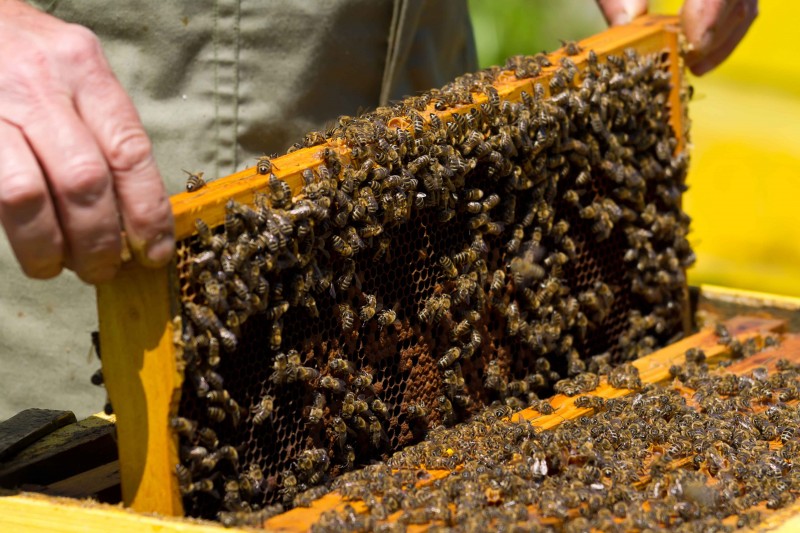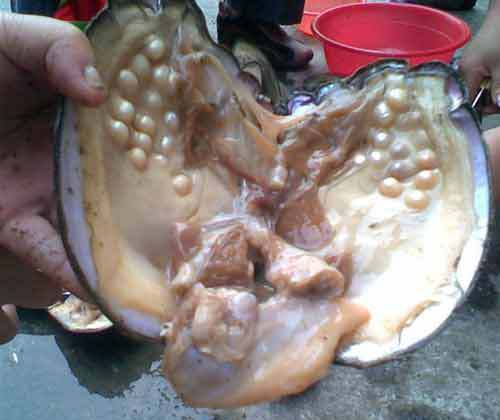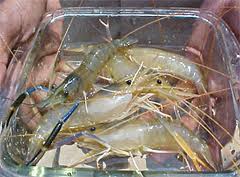Paper - I: Zoology
1. Non-chordata and Chordata:
(a) Classification and relationship of various phyla upto subclasses:
in deuterostomes, anus develops from blastopore.
What is blastopore ?
Ans- An opening into the archenteron during the embryonic stages of an organism.
What is archenteron?
Ans- the rudimentary alimentary cavity of an embryo at the gastrula stage.
What is Gastrulation?
Ans - Gastrulation is a phase early in the embryonic development of most animals, during which the single-layered blastula is reorganized into a multilayered structure known as the gastrula.
The Bilateria or bilaterians, or triploblasts, are animals with bilateral symmetry, i.e., they have a head (anterior) and a tail (posterior) as well as a back (dorsal) and a belly (ventral);
What is Radiata ?
Radiata or Radiates is a historical taxonomic rank that was used to classify animals with radially symmetric body plans.
Hemichordate is a phylum of marine deuterostome animals, generally considered the sister group of the echinoderms.
(b) Protozoa:
(c) Porifera:
(d) Cnidaria:
(e) Platyhelminthes:
(f) Nemathelminthes:
(g) Annelida:
(h) Arthropoda:
(i) Mollusca:
(j) Echinodermata:
(k) Protochordata:
(l) Pisces:
(m) Amphibia:
(o) Aves:
(p) Mammalia:
(q) Comparative functional anatomy of various systems of vertebrates
(a) Classification and relationship of various phyla upto subclasses:
- Acoelomate and Coelomate,
- Acoelomate animals, like flatworms, have no body cavity at all. Semi-solid mesodermal tissues between the gut and body wall hold their organs in place.
The term "coelom" derives from the Ancient Greek word (koília), meaning "cavity"
The coelom is the main body cavity in most animals and is positioned inside the body to surround and contain the digestive tract and other organs. In developed animals, it is lined with mesothelium. In other animals, such as molluscs, it remains undifferentiated
- Protostomes and Deuterostomes,
in deuterostomes, anus develops from blastopore.
What is blastopore ?
Ans- An opening into the archenteron during the embryonic stages of an organism.
What is archenteron?
Ans- the rudimentary alimentary cavity of an embryo at the gastrula stage.
What is Gastrulation?
Ans - Gastrulation is a phase early in the embryonic development of most animals, during which the single-layered blastula is reorganized into a multilayered structure known as the gastrula.
- Bilateria and Radiata;
The Bilateria or bilaterians, or triploblasts, are animals with bilateral symmetry, i.e., they have a head (anterior) and a tail (posterior) as well as a back (dorsal) and a belly (ventral);
What is Radiata ?
Radiata or Radiates is a historical taxonomic rank that was used to classify animals with radially symmetric body plans.
- Status of Protista,
- Parazoa,
- Onychophora and Hemichordata; Symmetry.
Hemichordate is a phylum of marine deuterostome animals, generally considered the sister group of the echinoderms.
- Locomotion,
- nutrition,
- reproduction,
- sex;
- General features and life history of Paramaecium,
- Monocystis,
- Plasmodium and Leishmania.
(c) Porifera:
- Skeleton,
- canal system and reproduction.
(d) Cnidaria:
- Polymorphism,
- defensive structures and their mechanism;
- coral reefs and their formation; metagenesis;
- general features and life history of Obelia and Aurelia.
(e) Platyhelminthes:
- Parasitic adaptation;
- general features and life history of Fasciola and Taenia and their pathogenic symptoms.
(f) Nemathelminthes:
- General features,
- life history,
- parasitic adaptation of Ascaris and Wuchereria.
(g) Annelida:
- Coelom and metamerism;
- modes of life in polychaetes;
- general features and life history of Nereis, earthworm and leach.
(h) Arthropoda:
- Larval forms and parasitism in Crustacea;
- vision and respiration in arthropods (Prawn, cockroach and scorpion);
- modification of mouth parts in insects (cockroach, mosquito, housefly, honey bee and butterfly);
- metamorphosis in insect and its hormonal regulation, social behaviour of Apis and termites.
(i) Mollusca:
- Feeding,
- respiration,
- locomotion,
- general features and life history of Lamellidens,
- Pila and Sepia,
- torsion and detorsion in gastropods.
(j) Echinodermata:
- Feeding,
- respiration,
- locomotion,
- larval forms,
- general features and life history of Asterias.
(k) Protochordata:
- Origin of chordates;
- general features and life history of Branchiostoma and Herdmania.
(l) Pisces:
- Respiration,
- locomotion and migration.
(m) Amphibia:
- Origin of tetrapods,
- parental care,
- paedomorphosis.
- Origin of reptiles,
- skull types,
- status of Sphenodon and crocodiles.
(o) Aves:
- Origin of birds,
- flight adaptation,
- igration.
(p) Mammalia:
- Origin of mammals,
- dentition,
- general features of egg laying mammals,
- pouched-mammals,
- aquatic mammals and primates,
- endocrine glands (pituitary, thyroid, parathyroid, adrenal, pancreas, gonads) and their interrelationships.
(q) Comparative functional anatomy of various systems of vertebrates
- integument and its derivatives,
- endoskeleton,
- locomotory organs,
- digestive system,
- respiratory system,
- circulatory system including heart and aortic arches,
- urino-genital system, brain and sense organs (eye and ear).
2. Ecology:
(a) Biosphere:
↡
- Concept of biosphere;
The biosphere, (from Greek bios = life, sphaira, sphere) is the layer of the planet Earth where life exists.
- Biomes,
Biomes are very large ecological areas on the earth's surface, with fauna and flora (animals and plants) adapting to their environment.
- Biogeochemical cycles,
Biogeochemical cycle or substance turnover or cycling of substances is a pathway by which a chemical substance moves through biotic (biosphere) and abiotic (lithosphere, atmosphere, and hydrosphere) compartments of Earth.
- Human induced changes in atmosphere including green house effect,
- Ecological succession,
Ecological succession is the process of change in the species structure of an ecological community over time. The time scale can be decades (for example, after a wildfire), or even millions of years after a mass extinction.
- biomes and Ecotones,
An ecotone is a transition area between two biomes. It is where two communities meet and integrate. It may be narrow or wide, and it may be local (the zone between a field and forest) or regional (the transition between forest and grassland ecosystems).
- Eommunity ecology.
Community ecology or synecology is the study of the interactions between species in communities on many spatial and temporal scales, including the distribution, structure, abundance, demography, and interactions between coexisting populations.
(b) Concept of ecosystem;
Structure and function of ecosystem,
An ecosystem is a community made up of living organisms and nonliving components such as air, water, and mineral soil.
From the structure point of view, all ecosystems consist of the following basic components:
1. Abiotic components
2. Biotic components
Types of ecosystem,
- Forest Ecosystems.
- Grassland Ecosystems.
- Desert Ecosystems.
- Tundra Ecosystems.
- Freshwater Ecosystems.
- Marine Ecosystems. etc
Ecological succession,
Ecological adaptation.
All adaptations help organisms survive in their ecological niches. The adaptive traits may be structural, behavioural or physiological. Structural adaptations are physical features of an organism, such as shape, body covering, armament, and internal organization.
(c) Population;
↓
Characteristics,
Population dynamics,
Population dynamics is the branch of life sciences that studies the size and age composition ofpopulations as dynamical systems, and the biological and environmental processes driving them (such as birth and death rates, and by immigration and emigration).
Population stabilization.
Population stabilisation is a stage when the size of the population remains unchanged.
(d) Biodiversity and diversity conservation of natural resources.
(e) Wildlife of India.
↓
Wildlife of India. India is home to a variety of animal life. ... It is home to Bengal and Indochinese tigers, Asiatic lions, Indian and Indochinese leopards, snow leopards, clouded leopards, various species of Deer, including Chital, Hangul, Barasingha; the Indian Elephant, the Great Indian Rhinoceros, and many others.
The Wildlife Protection Act, 1972 is an Act of the Parliament of India enacted for protection of plants and animal species. Before 1972, India only had five designated national parks. Among other reforms, the Act established schedules of protected plant and animal species; hunting or harvesting these species was largely outlawed.
(f) Remote sensing for sustainable development.
↓
What is Remote Sensing ?
Remote sensing is the acquisition of information about an object or phenomenon without making physical contact with the object and thus in contrast to on-site observation. Remote sensing is used in numerous fields, including geography, land surveying and most Earth Science disciplines (for example, hydrology, ecology, meteorology, oceanography, glaciology, geology); it also has military, intelligence, commercial, economic, planning, and humanitarian applications.
(g) Environmental biodegradation, pollution and its impact on biosphere and its
prevention.
↓
Environmental degradation is the deterioration of the environment through depletion of resources such as air, water and soil; the destruction of ecosystems; habitat destruction; the extinction of wildlife; and pollution.
Pollution is the introduction of contaminants into the natural environment that cause adverse change.Pollution can take the form of chemical substances or energy, such as noise, heat or light. Pollutants, the components of pollution, can be either foreign substances/energies or naturally occurring contaminants. Pollution is often classed as point source or non point source pollution. In 2015, pollution killed 9 million people in the world.
3. Ethology:
What is Ethology ?
Ans- Ethology, from the Greek ethos (“behavior" or "manner”), is the study of animal behavior.
(a) Behaviour:
Sensory filtering,
Reponsive-ness,
Sign stimuli,
Learning and
memory,
Instinct,
Habituation,
Conditioning,
Imprinting - Imprinting, in psychobiology, a form of learning in which a very young animal fixes its attention on the first object with which it has visual, auditory, or tactile experience and thereafter follows that object.
(b) Role of hormones in drive;
Role of pheromones in alarm spreading;
Crypsis, - crypsis is the ability of an animal to avoid observation or detection by other animals.
Predator detection, - Animals use a number of behavioral strategies to enhance the probability of predator detection.
Predator tactics,
Social hierarchies in primates,
Social
organization in insects.
(c) Orientation, navigation, homing, biological rhythms, biological clock,
tidal, seasonal and circadian rhythms.
↱In 2017, the Nobel Prize in Physiology or Medicine was awarded to Jeffrey C. Hall, Michael Rosbash and Michael W. Young "for their discoveries of molecular mechanisms controlling the circadian rhythm" in fruit flies.
(d) Methods of studying animal behaviour including sexual conflict,
selfishness, kinship and altruism.
Altruism is the unselfish concern for other people;
4. Economic Zoology:
(a)
Apiculture,

sericulture,

lac culture,

carp culture -- Carp culture is the oldest form of aqua culture known to the world.
pearl culture,

prawn culture,

vermiculture.

(b) Major infectious and communicable diseases (malaria, filaria, tuberculosis, cholera and AIDS) their vectors, pathogens and prevention.
(c) Cattle and livestock diseases, their pathogen (helminthes) and vectors (ticks, mites, Tabanus, Stomoxys).
(d) Pests of sugar cane (Pyrilla perpusiella) oil seed (Achaea janata) and rice (Sitophilus oryzae).
(e) Transgenic animals.

(f) Medical biotechnology, human genetic disease and genetic counselling, gene therapy.
(g) Forensic biotechnology.
(a)
Apiculture,

sericulture,

lac culture,

carp culture -- Carp culture is the oldest form of aqua culture known to the world.
pearl culture,

prawn culture,

vermiculture.

(b) Major infectious and communicable diseases (malaria, filaria, tuberculosis, cholera and AIDS) their vectors, pathogens and prevention.
(c) Cattle and livestock diseases, their pathogen (helminthes) and vectors (ticks, mites, Tabanus, Stomoxys).
(d) Pests of sugar cane (Pyrilla perpusiella) oil seed (Achaea janata) and rice (Sitophilus oryzae).
(e) Transgenic animals.

(f) Medical biotechnology, human genetic disease and genetic counselling, gene therapy.
(g) Forensic biotechnology.
5. Biostatistics:
(Biostatistics is the application of statistics to a wide range of topics in biology.)
(Biostatistics is the application of statistics to a wide range of topics in biology.)
Designing
of experiments; null hypothesis; correlation, regression, distribution and
measure of central tendency, chi square, student-test, F-test (one-way &
two-way Ftest).
6. Instrumentation Methods:
(a) Spectrophotometer, phase contrast and fluorescence microscopy, radioactive tracer, ultra centrifuge, gel electrophoresis, PCR, ELISA, FISH and chromosome painting.
(a) Spectrophotometer, phase contrast and fluorescence microscopy, radioactive tracer, ultra centrifuge, gel electrophoresis, PCR, ELISA, FISH and chromosome painting.
(b) Electron microscopy (TEM, SEM).
END OF ZOOLOGY PAPER 1
Paper - II: Zoology Syllabus
1. Cell Biology:
(a) Structure and function of cell and its organelles (nucleus, plasma membrane, mitochondria, Golgi bodies, endoplasmic reticulum, ribosomes, and lysosomes), cell division (mitosis and meiosis), mitotic spindle and mitotic apparatus, chromosome movements, chromosome type polytene and lambrush, organization of chromatin, heterochromatin, Cell cycle regulation.
(b) Nucleic acid topology, DNA motif, DNA replication, transcription, RNA processing, translation, protein foldings and transport.
(a) Structure and function of cell and its organelles (nucleus, plasma membrane, mitochondria, Golgi bodies, endoplasmic reticulum, ribosomes, and lysosomes), cell division (mitosis and meiosis), mitotic spindle and mitotic apparatus, chromosome movements, chromosome type polytene and lambrush, organization of chromatin, heterochromatin, Cell cycle regulation.
(b) Nucleic acid topology, DNA motif, DNA replication, transcription, RNA processing, translation, protein foldings and transport.
2. Genetics:
(a) Modern concept of gene, split gene, genetic regulation, genetic code.
(b) Sex chromosomes and their evolution, sex determination in Drosophila and man.
(c) Mendel’s laws of inheritance, recombination, linkage, multiple alleles, genetics of blood groups, pedigree analysis, hereditary diseases in man.
(d) Mutations and mutagenesis.
(e) Recombinant DNA technology; plasmid, cosmid, artificial chromosomes as vectors, transgenic, DNA cloning and whole animal cloning (principles and methods).
(f) Gene regulation and expression in prokaryotes and eukaryotes.
(g) Signal molecules, cell death, defects in signaling pathway and consequences.
(h) RFLP, RAPD and AFLP and application of RFLP in DNA finger printing, ribozyme technologies, human genome project, genomics and protomics.
(a) Modern concept of gene, split gene, genetic regulation, genetic code.
(b) Sex chromosomes and their evolution, sex determination in Drosophila and man.
(c) Mendel’s laws of inheritance, recombination, linkage, multiple alleles, genetics of blood groups, pedigree analysis, hereditary diseases in man.
(d) Mutations and mutagenesis.
(e) Recombinant DNA technology; plasmid, cosmid, artificial chromosomes as vectors, transgenic, DNA cloning and whole animal cloning (principles and methods).
(f) Gene regulation and expression in prokaryotes and eukaryotes.
(g) Signal molecules, cell death, defects in signaling pathway and consequences.
(h) RFLP, RAPD and AFLP and application of RFLP in DNA finger printing, ribozyme technologies, human genome project, genomics and protomics.
3. Evolution:
(a) Theories of origin of life.
(b) Theories of evolution; Natural selection, role of mutations in evolution, evolutionary patterns, molecular drive, mimicry, variation, isolation and speciation.
(c) Evolution of horse, elephant and man using fossil data.
(d) Hardy-Weinberg Law.
(e) Continental drift and distribution of animals.
(a) Theories of origin of life.
(b) Theories of evolution; Natural selection, role of mutations in evolution, evolutionary patterns, molecular drive, mimicry, variation, isolation and speciation.
(c) Evolution of horse, elephant and man using fossil data.
(d) Hardy-Weinberg Law.
(e) Continental drift and distribution of animals.
4. Systematics: Zoological
nomenclature, international code, cladistics, molecular taxonomy and
biodiversity.
5. Biochemistry:
(a) Structure and role of carbohydrates, fats, fatty acids and cholesterol, proteins and amino-acids, nucleic acids. Bioenergetics.
b) Glycolysis and Kreb cycle, oxidation and reduction, oxidative phosphorylation, energy conservation and release, ATP cycle, cyclic AMP – its structure and role.
(c) Hormone classification (steroid and peptide hormones), biosynthesis and functions.
(d) Enzymes: types and mechanisms of action.
(e) Vitamins and co-enzymes
(f) Immunoglobulin and immunity.
(a) Structure and role of carbohydrates, fats, fatty acids and cholesterol, proteins and amino-acids, nucleic acids. Bioenergetics.
b) Glycolysis and Kreb cycle, oxidation and reduction, oxidative phosphorylation, energy conservation and release, ATP cycle, cyclic AMP – its structure and role.
(c) Hormone classification (steroid and peptide hormones), biosynthesis and functions.
(d) Enzymes: types and mechanisms of action.
(e) Vitamins and co-enzymes
(f) Immunoglobulin and immunity.
6. Physiology (with special reference to mammals):
(a) Composition and constituents of blood; blood groups and Rh factor in man, factors and mechanism of coagulation, iron metabolism, acid-base balance, thermo-regulation, anticoagulants.
(b) Haemoglobin: Composition, types and role in transport of oxygen and carbon dioxide.
(c) Digestion and absorption: Role of salivary glands, liver, pancreas and intestinal glands.
(d) Excretion: nephron and regulation of urine formation; osmo-regulation and excretory product
(e) Muscles: Types, mechanism of contraction of skeletal muscles, effects of exercise on muscles.
(f) Neuron: nerve impulse – its conduction and synaptic transmission, neurotransmitters.
(g) Vision, hearing and olfaction in man.
(h) Physiology of reproduction, puberty and menopause in human.
(a) Composition and constituents of blood; blood groups and Rh factor in man, factors and mechanism of coagulation, iron metabolism, acid-base balance, thermo-regulation, anticoagulants.
(b) Haemoglobin: Composition, types and role in transport of oxygen and carbon dioxide.
(c) Digestion and absorption: Role of salivary glands, liver, pancreas and intestinal glands.
(d) Excretion: nephron and regulation of urine formation; osmo-regulation and excretory product
(e) Muscles: Types, mechanism of contraction of skeletal muscles, effects of exercise on muscles.
(f) Neuron: nerve impulse – its conduction and synaptic transmission, neurotransmitters.
(g) Vision, hearing and olfaction in man.
(h) Physiology of reproduction, puberty and menopause in human.
7. Developmental Biology:
(a) Gametogenesis; spermatogenesis, composition of semen, in vitro and in vivo capacitation of mammalian sperm, Oogenesis, totipotency; fertilization, morphogenesis and morphogen, blastogenesis, establishment of body axes formation, fate map, gestulation in frog and chick; genes in development in chick, homeotic genes, development of eye and heart, placenta in mammals.
(b) Cell lineage, cell-to cell interaction, Genetic and induced teratogenesis, role of thyroxine in control of metamorphosis in amphibia, paedogenesis and neoteny, cell death, aging.
(c) Developmental genes in man, in vitro fertilization and embryo transfer, cloning.
(d) Stem cells: Sources, types and their use in human welfare.
(e) Biogenetic law.
(a) Gametogenesis; spermatogenesis, composition of semen, in vitro and in vivo capacitation of mammalian sperm, Oogenesis, totipotency; fertilization, morphogenesis and morphogen, blastogenesis, establishment of body axes formation, fate map, gestulation in frog and chick; genes in development in chick, homeotic genes, development of eye and heart, placenta in mammals.
(b) Cell lineage, cell-to cell interaction, Genetic and induced teratogenesis, role of thyroxine in control of metamorphosis in amphibia, paedogenesis and neoteny, cell death, aging.
(c) Developmental genes in man, in vitro fertilization and embryo transfer, cloning.
(d) Stem cells: Sources, types and their use in human welfare.
(e) Biogenetic law.
Important Books -
1. Cell and molecular Biology - P.K.Gupta


Wow good website, thank you.
ReplyDeleteGhasa O Akasha By Pratibha Ray
Order Odia Books
Odia Books Online